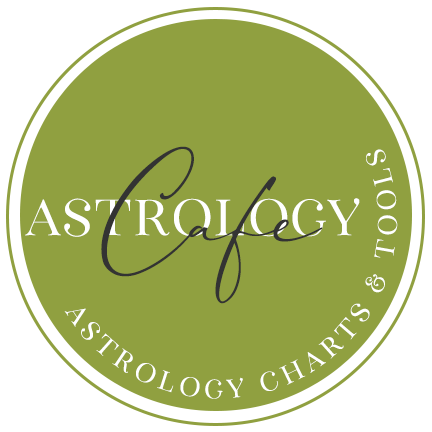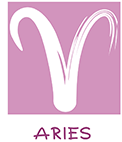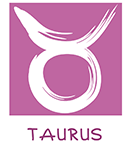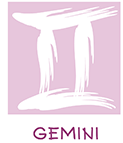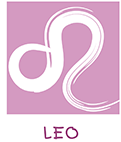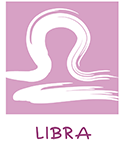Glossary of Astrology
Glossary of Astrological Terms
air signs these are the signs of Gemini, Libra, and Aquarius.
angles these are the Ascendant (ASC), Descendant (DSC), Midheaven (MC), and Innum Coeli (IC), referring to the cusps of the first, seventh, tenth, and fourth houses, respectively.
ascendant also known as the rising sign. this is the sign on the cusp of the first house of the natal chart. it is the sign and degree of that sign that is rising on the eastern horizon at the moment of birth, with respect to the place of birth. abbreviation: ASC
aspects aspects are an important part of modern astrology. as the planets move in their elongated orbits around the Sun, they form various angular relationships with one another, using the Sun or Earth as the center. these are called aspects. the most popular aspects result from dividing the circle by numbers like 1,2,3,4, resulting in aspects such as the conjunction (0 degrees), opposition (180 degrees), trine (120 degrees), square (90 degrees), and so forth. when two planets form an aspect with one another, their energies and natures are said to combine and work in harmony or discord. for example, when two planets are exactly on opposite sides of the Sun (earth), they are in opposition.
cardinal signs these are the signs of Aries, Cancer, Libra, and Capricorn, and are related to the change of the seasons.
critical degrees classic critical degrees are 0, 13, and 26 degrees of cardinal signs (Aries, Cancer, Libra, and Capricorn); 8-9 and 21-22 degrees of fixed signs (Taurus, Leo, Scorpio, and Aquarius); and 4 and 17 degrees of mutable signs (Gemini, Virgo, Sagittarius, and Pisces). Many astrologers consider 0 and 29 degrees of any sign critical degrees as well. The classic critical degrees are considered sensitive, emphasized, and often strengthening, points. The 0 and 29 degrees are more crisis-oriented, especially in predictive work.
cusp the beginning of a house in the chart. also, a cusp of a sign is the degree when one sign ends and the other begins. there is a lot of talk about being “born on the cusp”. a sun sign is either one sign or the other, regardless of whether it is almost another sign.
descendant the cusp of the seventh house of the astrology chart. this point is directly opposite the ascendant.
earth signs these are the signs of Taurus, Virgo, and Capricorn.
electional astrology a branch of astrology in which favorable times are elected, or chosen, in advance.
elements the signs are divided into 4 elements: Fire, Earth, Air, and Water.
emphatic aspects the emphatic aspects are those that emphasize or align two planetary energies with one another. conjunction (0 degrees) …two planets at the same point in the zodiac are said to be in conjunctions. their natures are fused or blended into one…..opposition (180 degrees) …two planets at opposite sides of the zodiac. the energies are in alignment with each other. they can pull together or apart, depending upon the nature of the planets involved.
feminine signs these are the signs of Taurus, Cancer, Virgo, Scorpio, Capricorn, and Pisces. the remaining 6 signs of the zodiac are masculine signs. feminine signs are also referred to as “negative” or “receptive” signs.
fire signs these are the signs of Aries, Leo, and Sagittarius.
fixed signs these are the signs of Taurus, Leo, Scorpio, and Aquarius.
grand trine this aspect pattern involves three points (three or more planets may be involved) that form mutual trines to each other. when lines are drawn from each planet to the other in a natal chart, a triangle results. (read more).
glyphs these are the symbols used for the astrological signs, planets and luminaries, and aspects. (see astrology glyphs).
hard aspects are generally considered the conjunction, opposition, and square. in midpoint work, the hard aspects also include the semi-square and sesquiduadrate. these represent challenge, obstacles, and substance. They provide meat and potatoes in our life. too many can block or obstruct the life flow, yet too few can cause life to be weak or thin.
houses the horoscope divides the heavens into 12 houses. each house has rulership over specific areas of life. (read more about houses).
luminaries the Sun and the Moon.
masculine signs these are the signs of Aries, Gemini, Leo, Libra, Sagittarius, and Aquarius. the remaining 6 signs of the zodiac are feminine signs. masculine signs are also referred to as “positive” signs.
midheaven this is the sign, and degree of that sign, on the cusp of the tenth house of the natal chart. it is the highest point in the zodiac at the moment of birth, and in relationship to the place of birth. abbreviation: MC
mutable signs these are the signs of Gemini, Virgo, Sagittarius, and Pisces.
natal chart horoscope drawn for a person’s birth. also known as a birth chart. the natal chart is a map of one’s life. similar to taking a picture of the planets a the time of one’s birth–the universe stopped at that moment in time. it reveals what the universe has to say about who a person is and what he or she may become. the chart wheel is a map of the space surrounding a person at the time of birth. the wheel is divided in 12 sections called houses. planets in the heavens are placed on the chart wheel in the houses that correspond to where they actually are in the sky at birth.
orb when determining whether one planet forms an aspect to another, astrologers allow an “orb” of influence, which is a specific number of degrees. aspects between planets gradually form, become exact and separate. when an aspect is exact, it has its greatest impact. yet, the effect of most aspects can be felt for some time before and after the moment when it is exact. the range within which an aspect is in operation is called its ‘orb of influence’, or simply its orb. an orb of one or two degrees of arc on either side of the exact aspect is considered a close or tight orb, while an orb of 10 degrees is loose.
part of fortune an Arabic Part, and perhaps the most well-known one. wherever the part of fortune is found in the natal chart is the place where a person is thought to possess natural talent.
personal planets these inner planets and luminaries include Sun, Moon, Mercury, Venus, and Mars. they have a personal and direct effect on the native’s personality.
planetary rulers each sign is ruled by a planet. see our planetary rulers page for more information.
quadrants there are 4 “quadrants” in a chart, and each starts at the cusp of the first, fourth, seventh, and tenth houses. (read about hemisphere emphasis).
retrograde a planet is considered “retrograde” when it appears to be moving backwards. both “retrograde” and “direct” are terms used in astrology to describe the direction of planetary movement with relation to the Earth. note that the planets do not actually move backwards. However, they appear (from our perspective on Earth) to back up for periods of time. the Sun and the Moon never retrograde. (read about mercury retrograde, venus retrograde, and mars retrograde; see current and upcoming retrograde activity).
soft aspects are generally considered the sextile and trine aspects, and are also referred to as “easy” and “flowing” aspects. the soft aspects bring ease, clarity, and vision to our lives. we can see, grasp, and understand what is happening. too few of the soft aspects means we don’t know what we are doing or what is happening in our lives, while too many soft aspects make for a life that runs cool, is overly mental, and lacking in substance.
synastry the art of relationship astrology. (see synastry articles).
void-of-course a term describing a planet that does not apply to a major aspect until it changes sign, usually referring to the Moon. a void-of-course Moon time period is often considered to be a less than favorable time to start a new project. instead, this period is best used to reflect, review, and re-organize.
water signs these are the signs of Cancer, Scorpio, and Pisces.
zodiac is a circle of 360 degrees, divided into 12 equal sectors of 30 degrees each that are the astrology signs.
